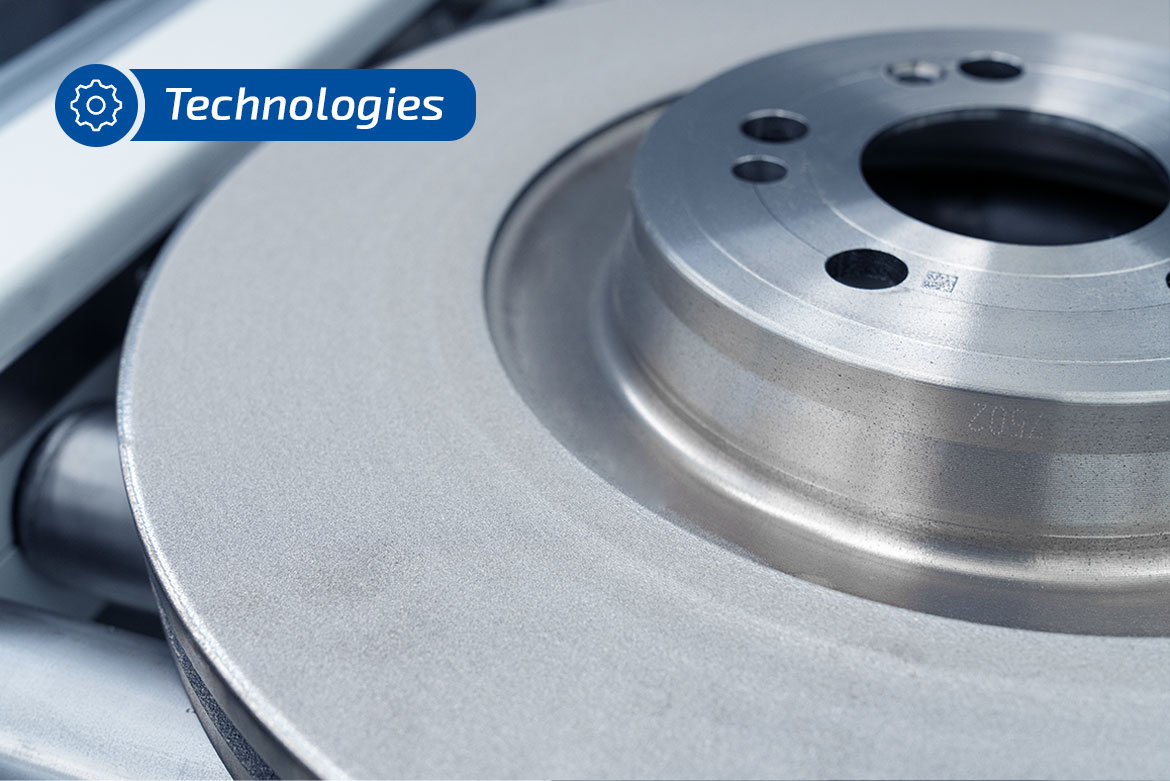The automotive industry is facing a major challenge: the Euro 7 standard stipulates strict limits for particulate matter emissions. Cars will then only be allowed to emit around three milligrams of particulate matter per kilometer – a drastic reduction compared to today’s values of up to 40 milligrams. To achieve these ambitious targets, car manufacturers are increasingly relying on innovative technologies such as coated brake discs.
Laser cladding is a promising process for manufacturing these ultra-modern brake discs. In this application, a special material powder made of stainless steel and hard carbide is welded onto the surface of the brake disc using a laser. The result is brake systems that not only drastically reduce particulate emissions, but also minimize wear and prevent corrosion.
However, the design and development of this new coating technology also creates new challenges in post-processing. With the VLC 450 DG grinding machine, EMAG offers a specialized solution for the machining of these high-tech brake discs.
We spoke with Jannik Röttger, Head of Grinding Technology at EMAG, about this innovative technology and EMAG’s response to the challenges of the Euro 7 standard.
Tag:
EURO 7 standard
With the introduction of the EURO 7 standard, braking systems in cars will have to undergo massive changes, as this is the first time that particulate emissions have been regulated and many current models do not meet these requirements with their brakes. What does this mean in concrete terms for automotive production, what role does the hard coating of brake discs play and why is EMAG’s new laser metal deposition technology the ideal solution? An interview with Dominic Grimminger, brake disc coating expert at EMAG.
